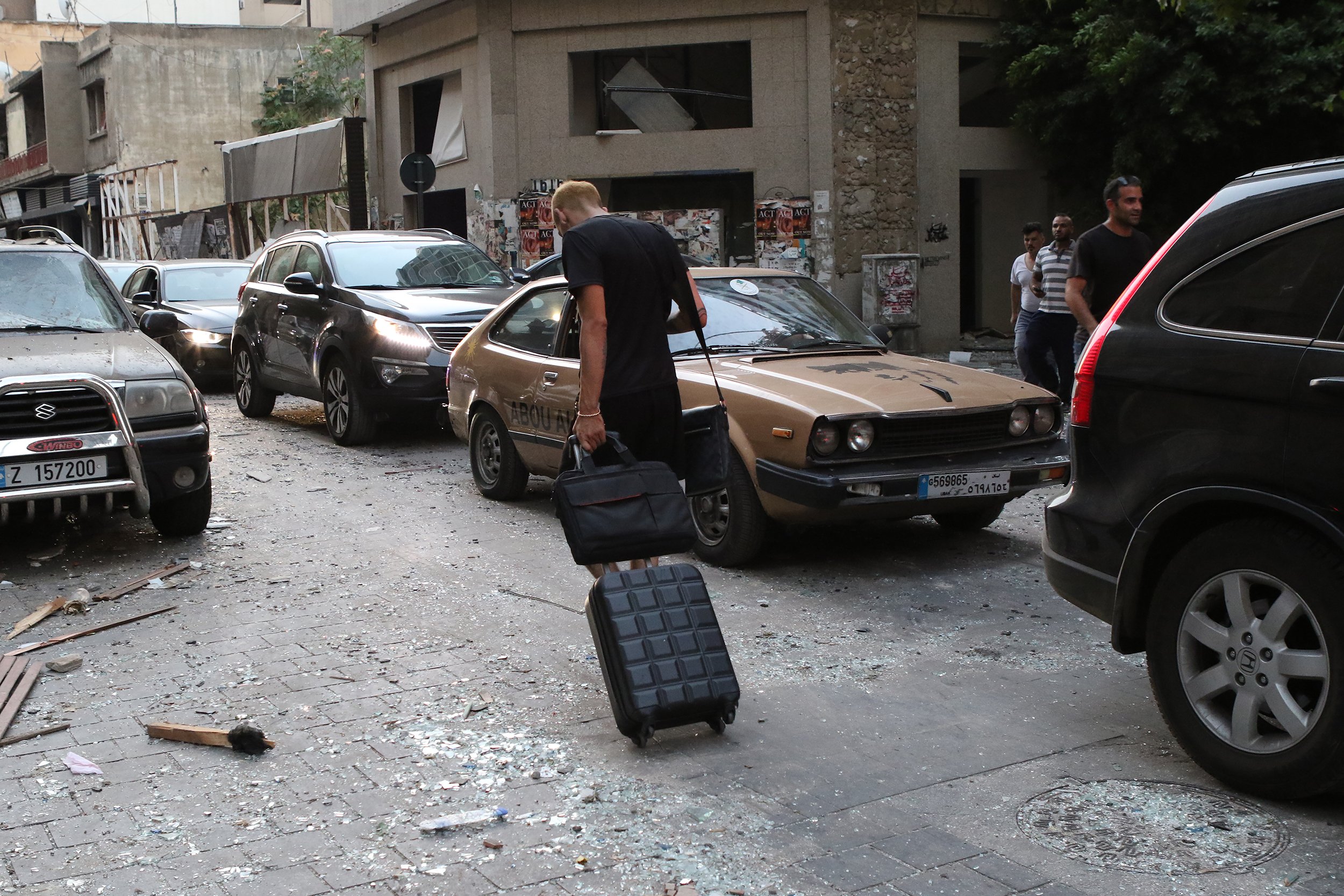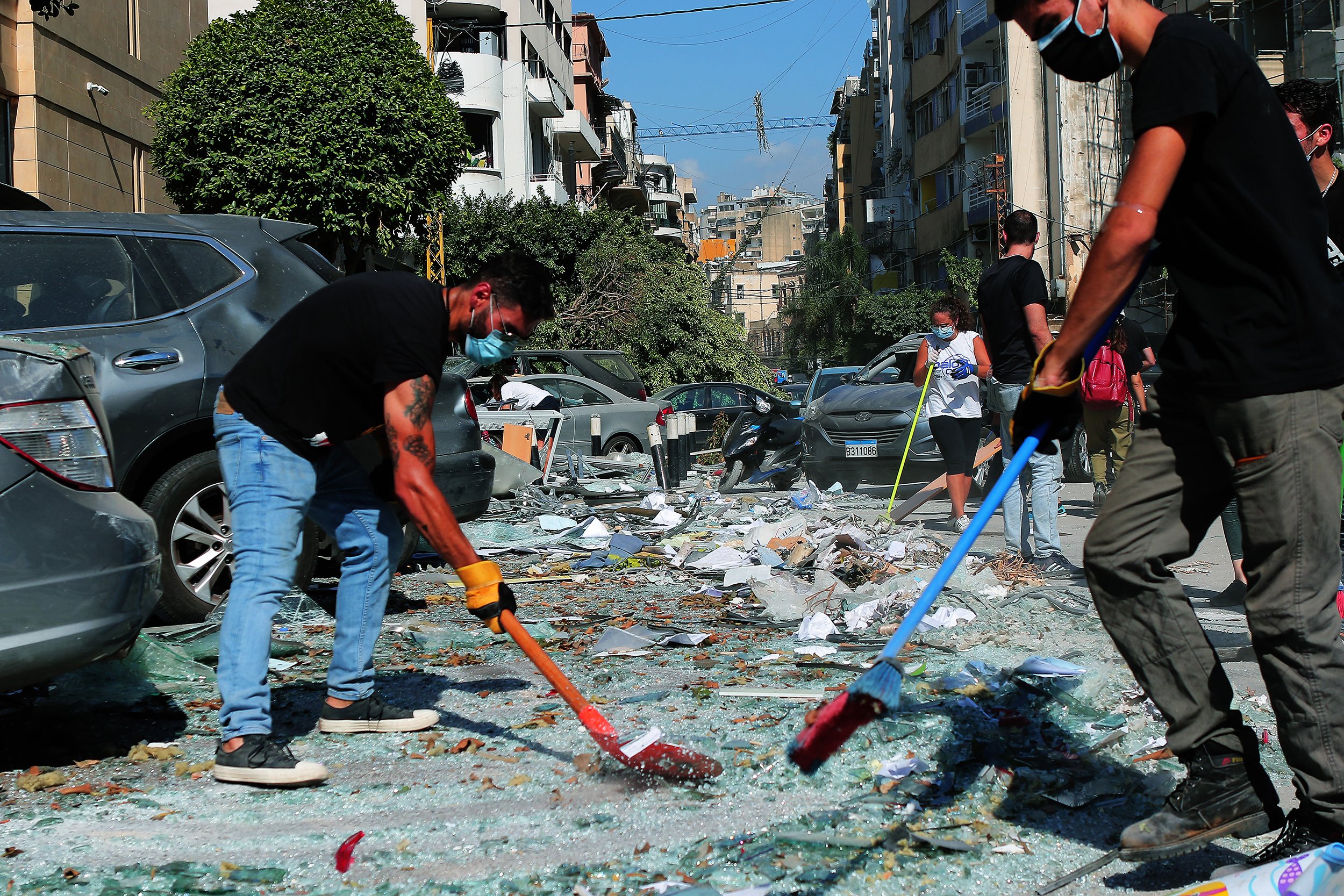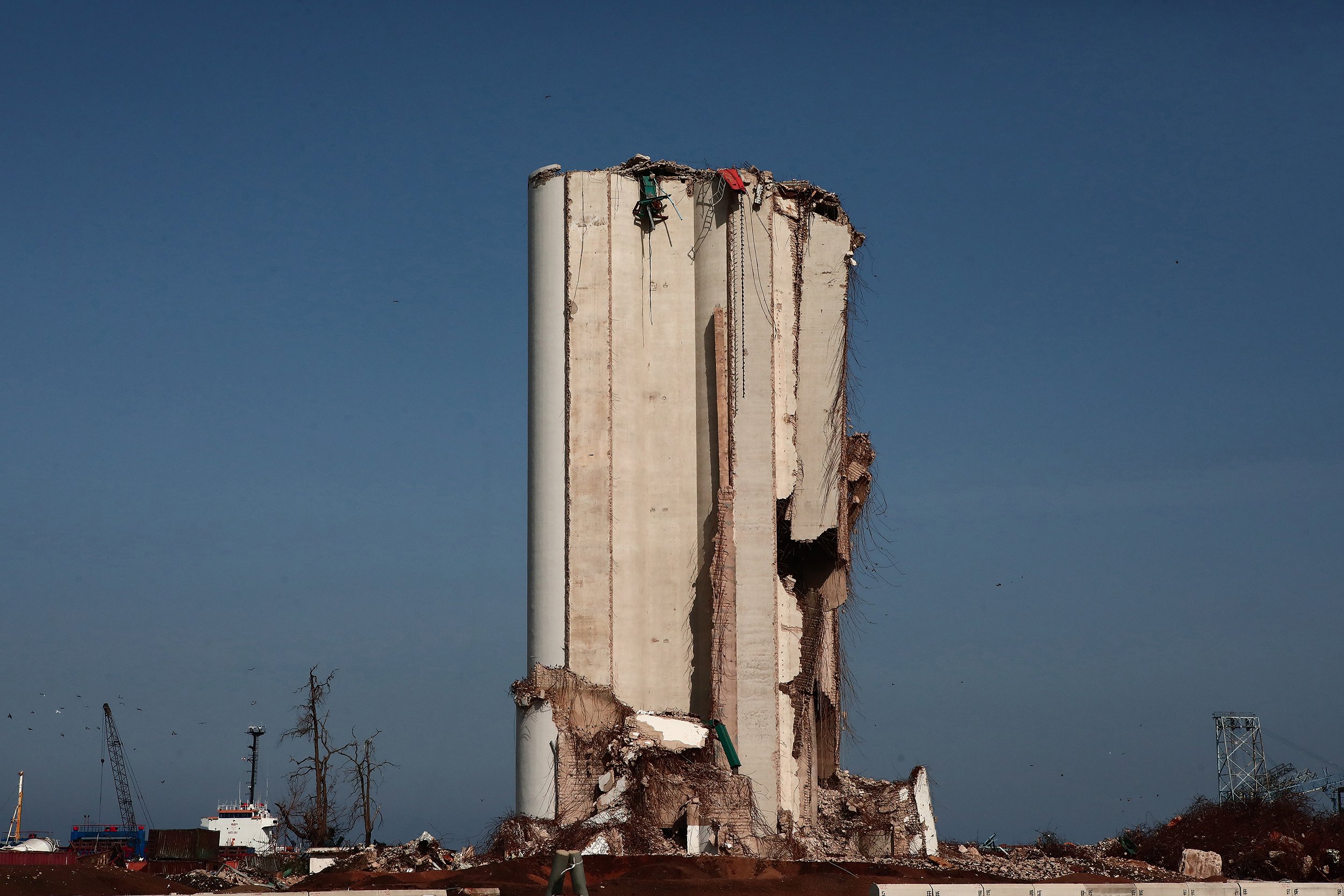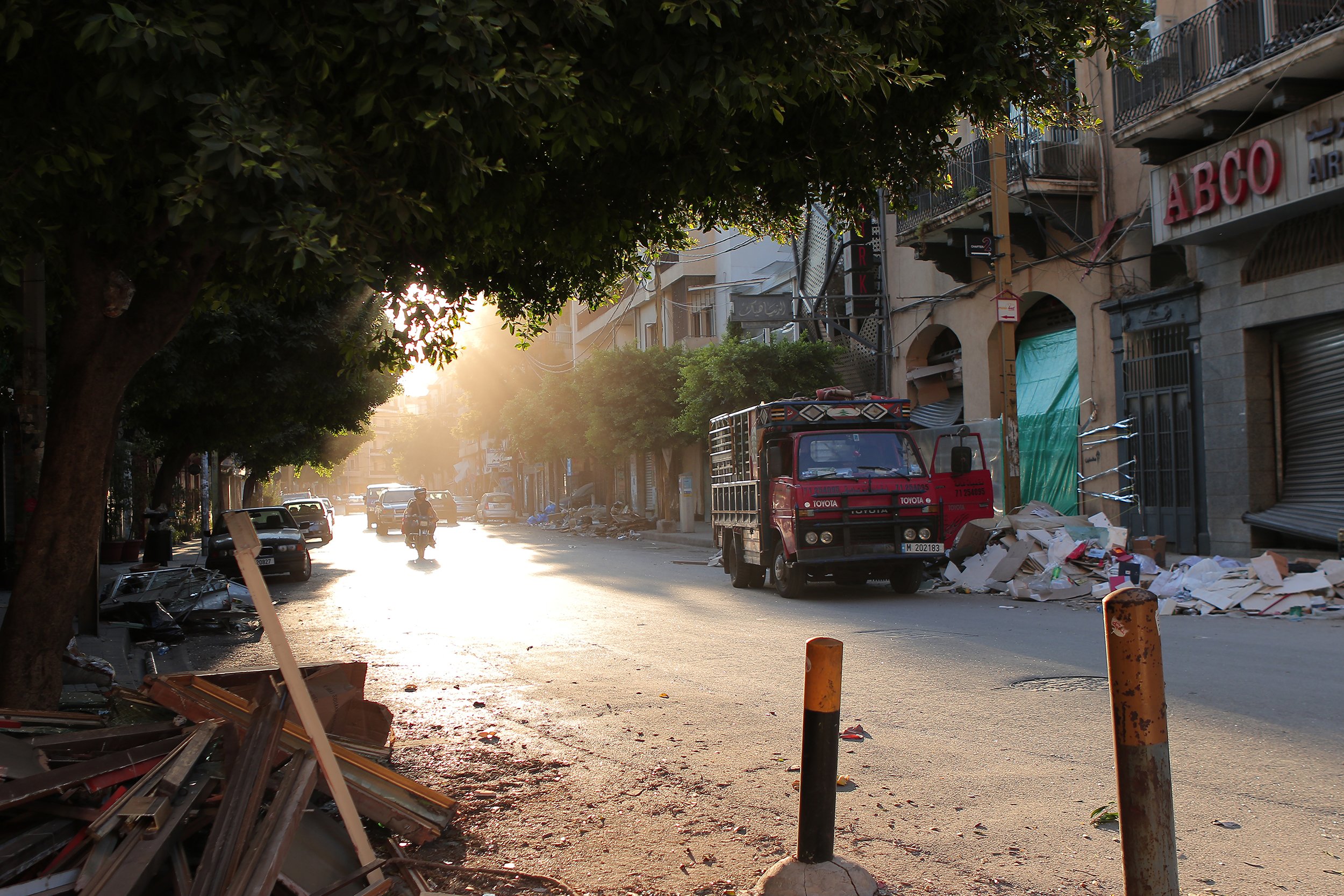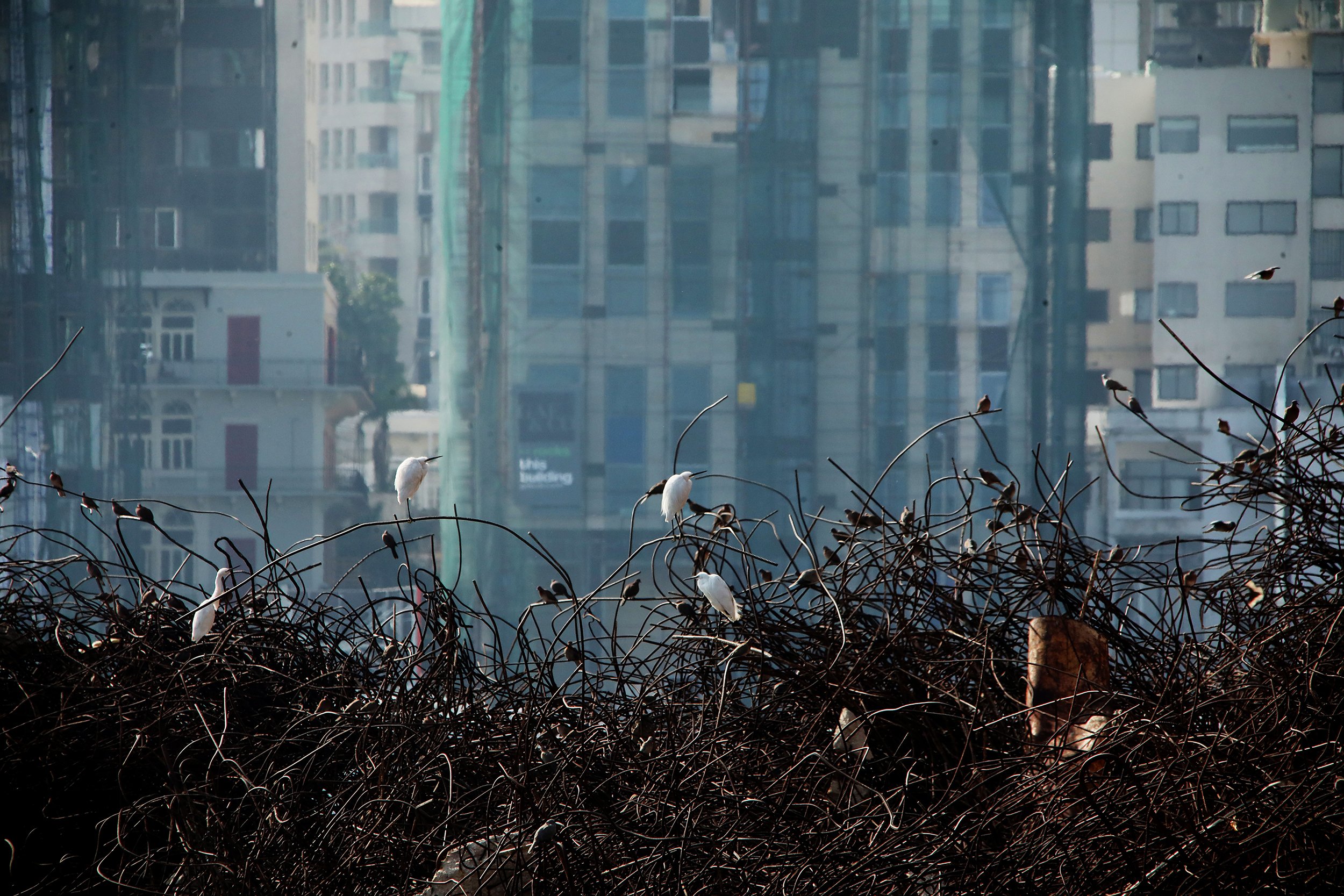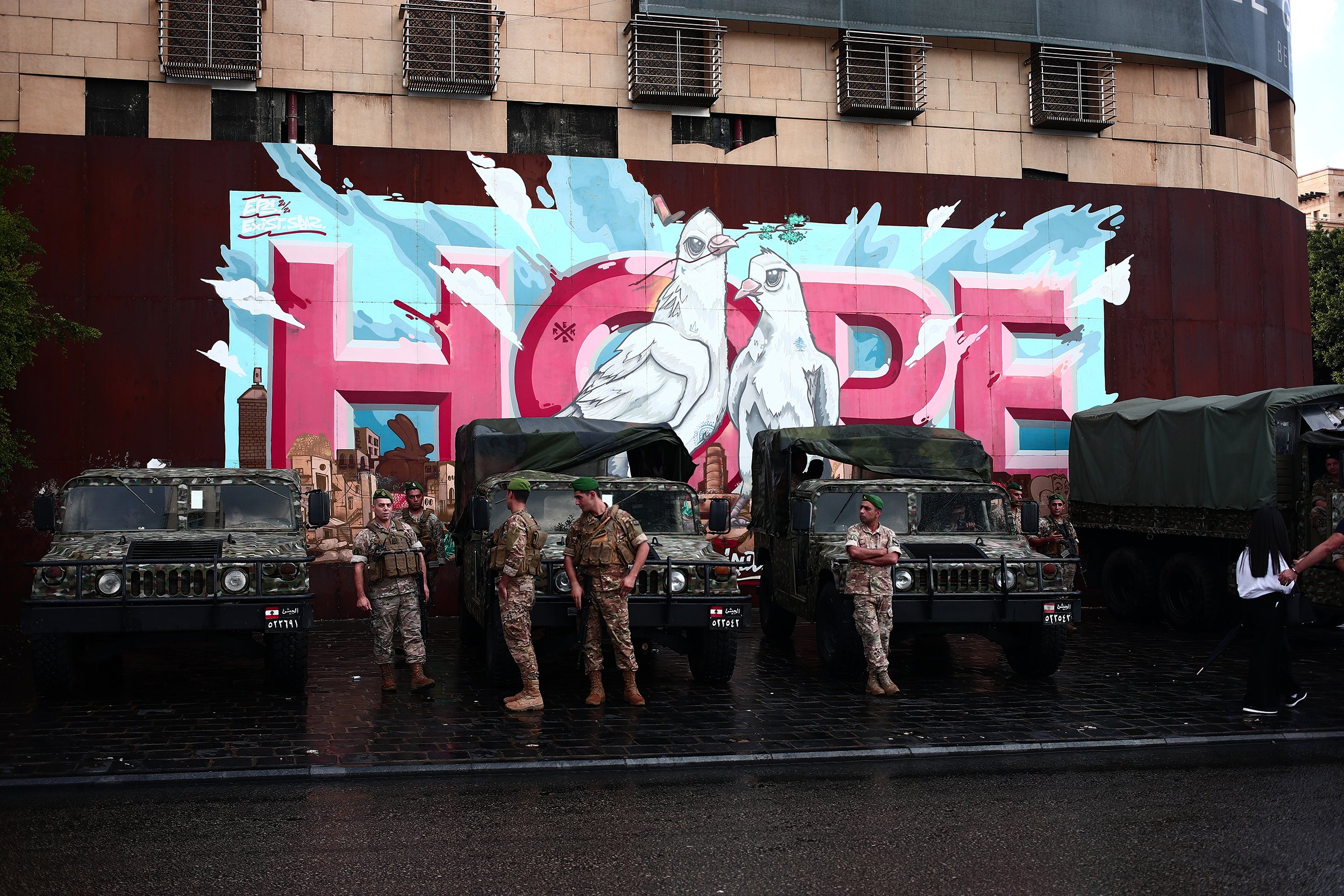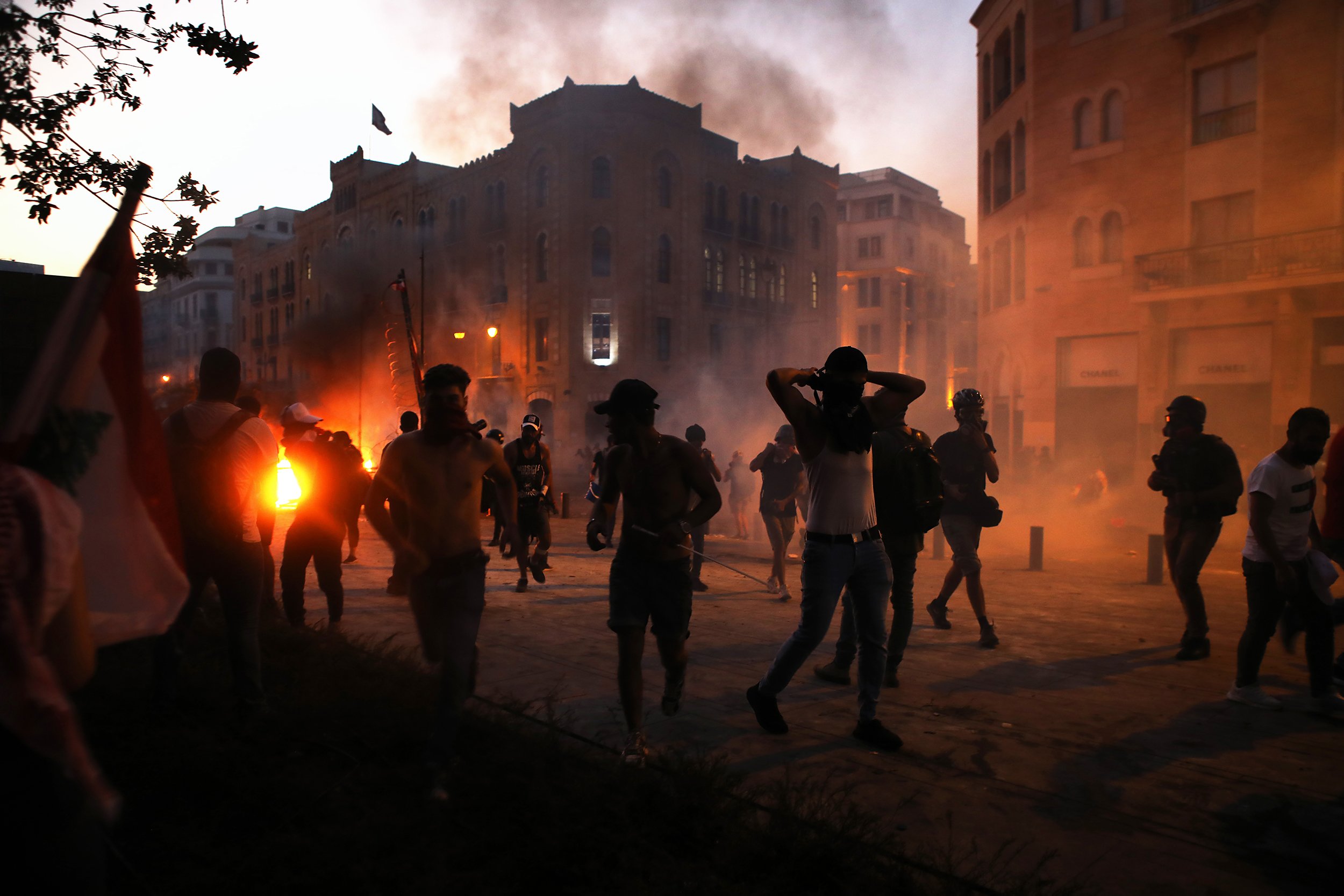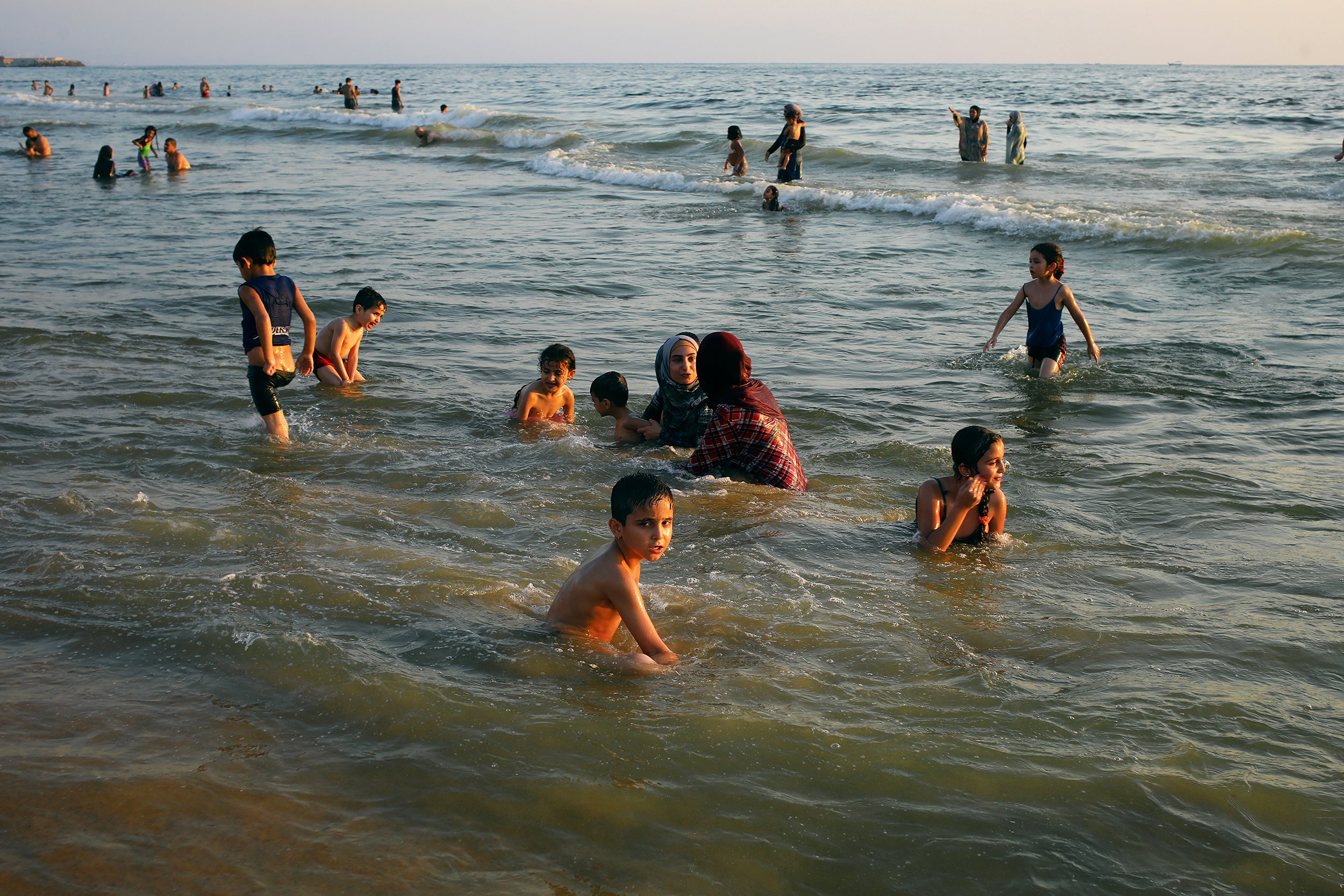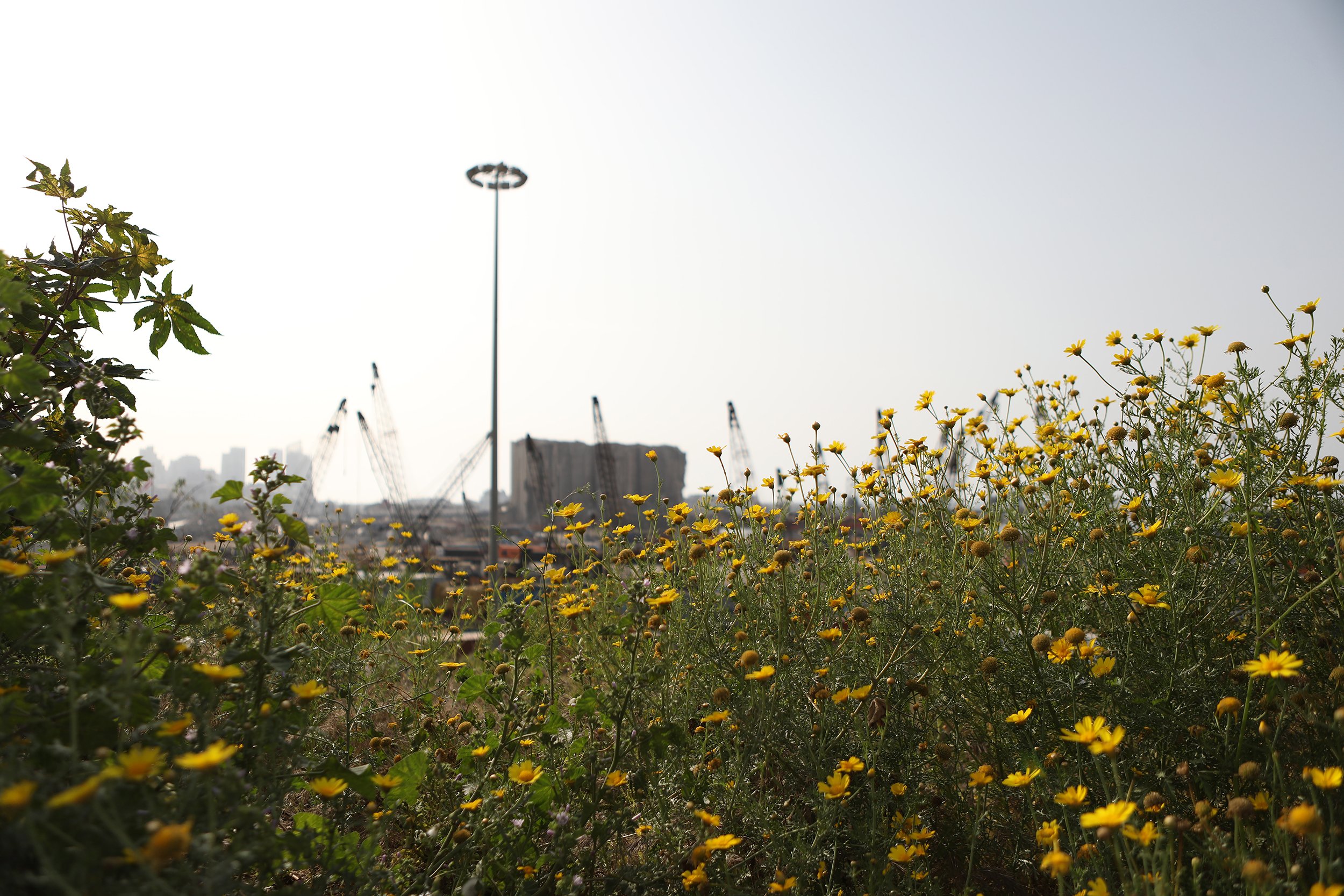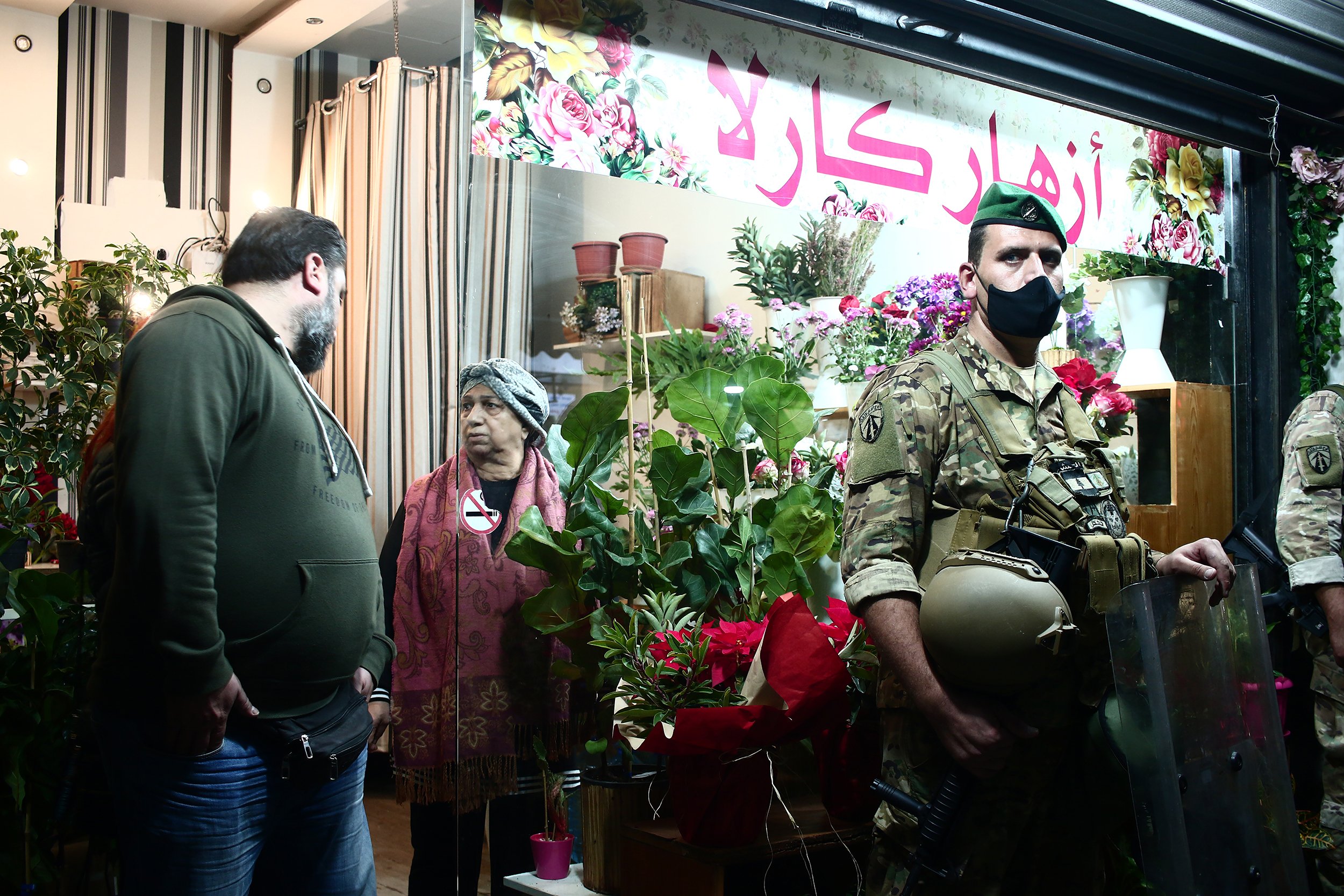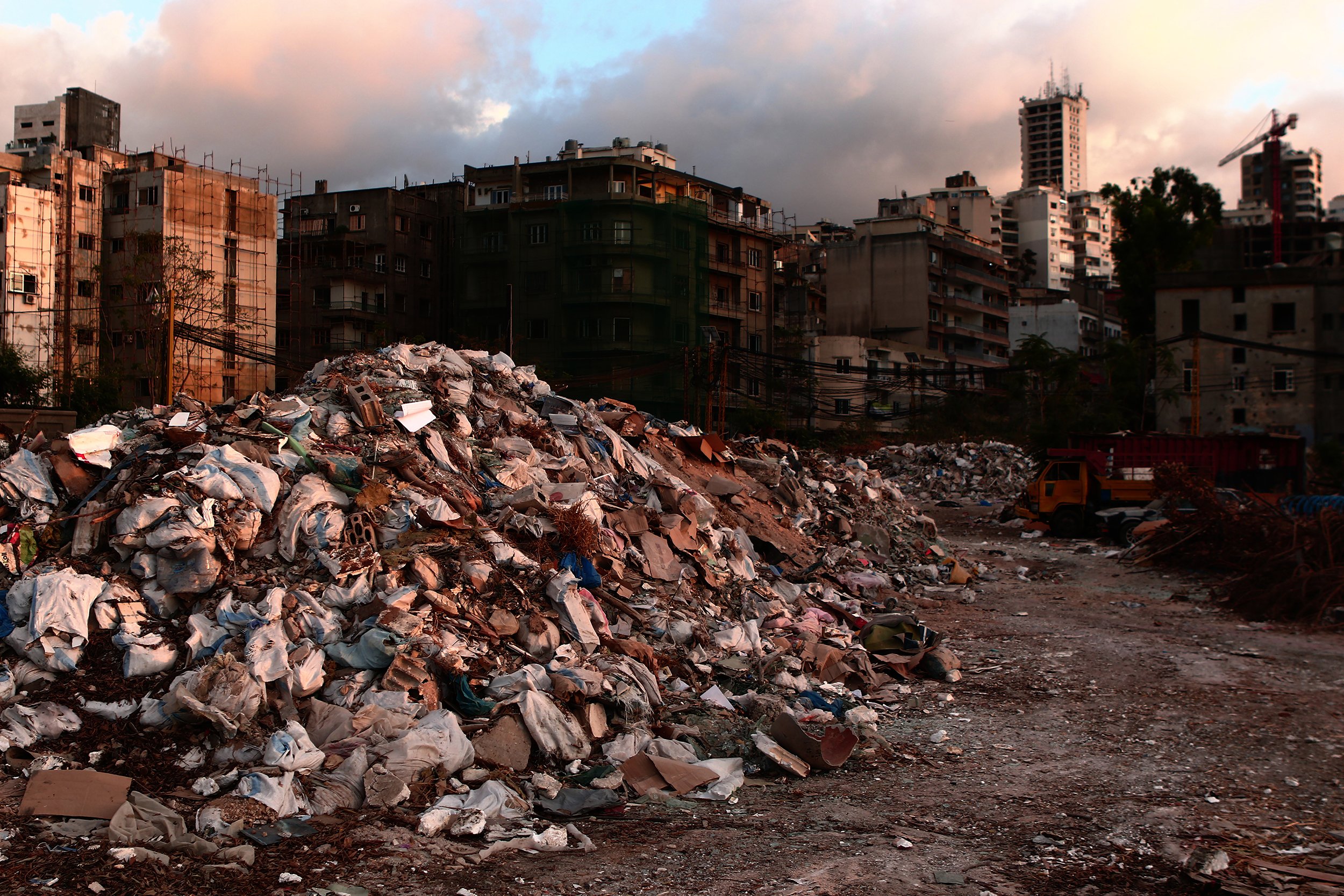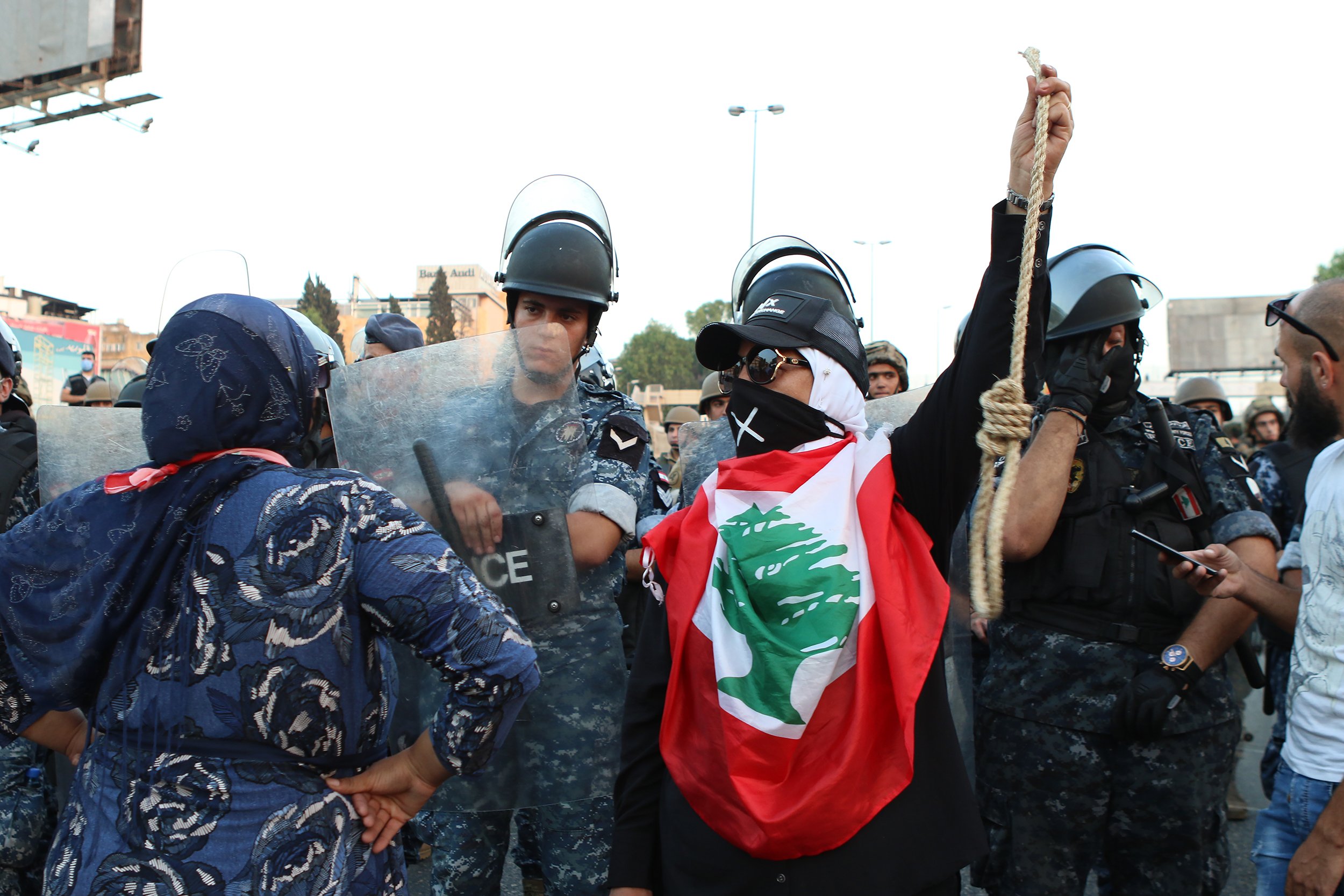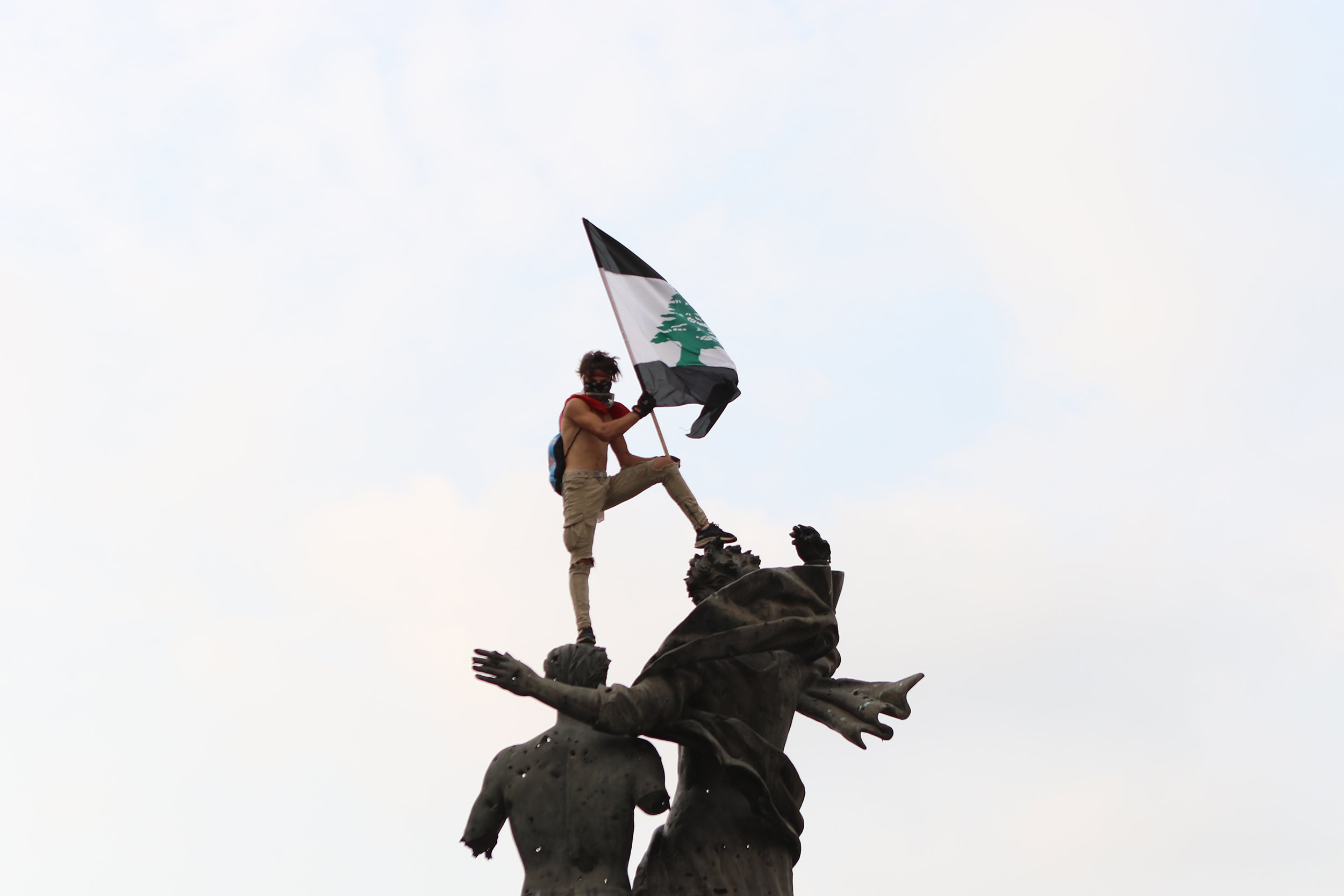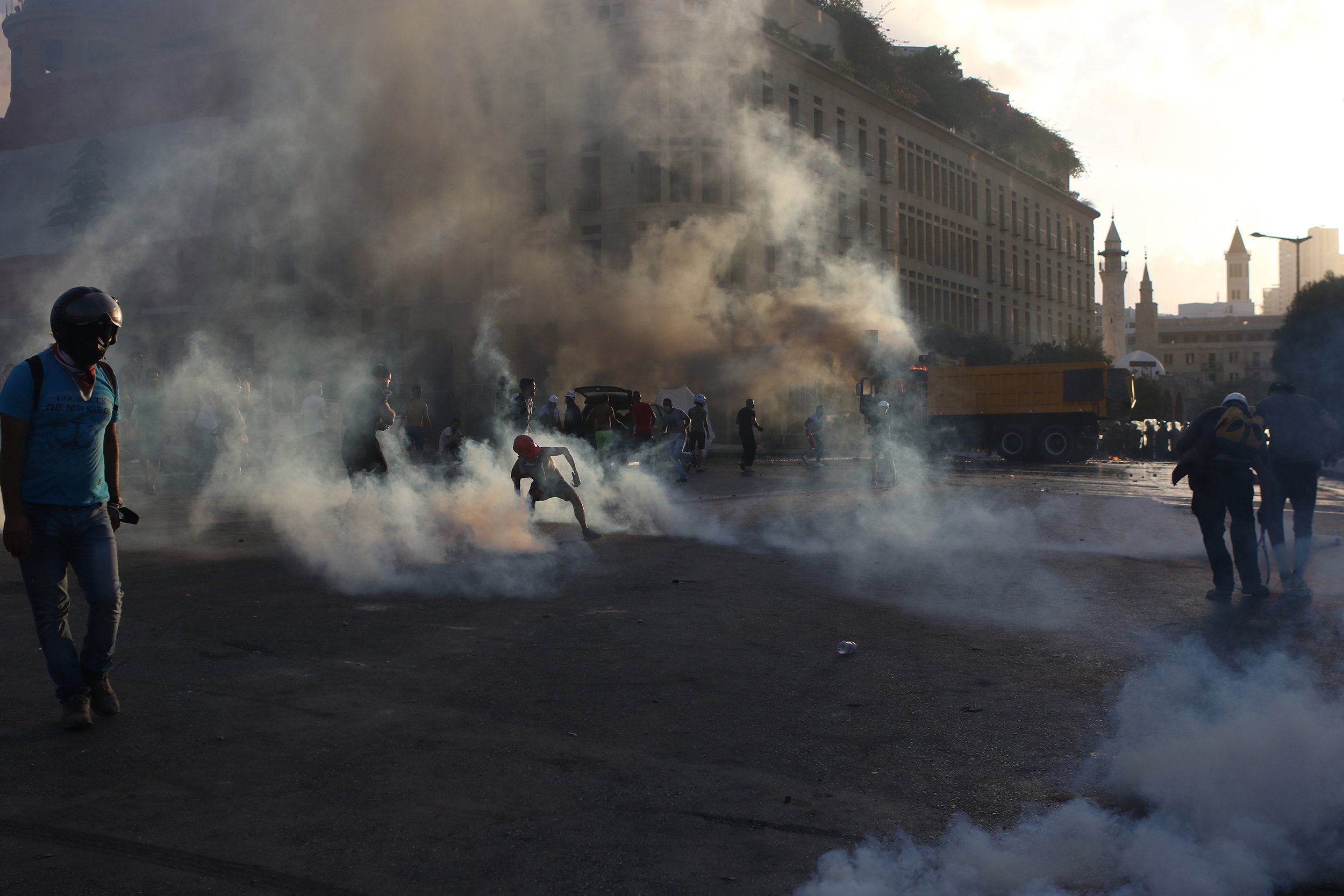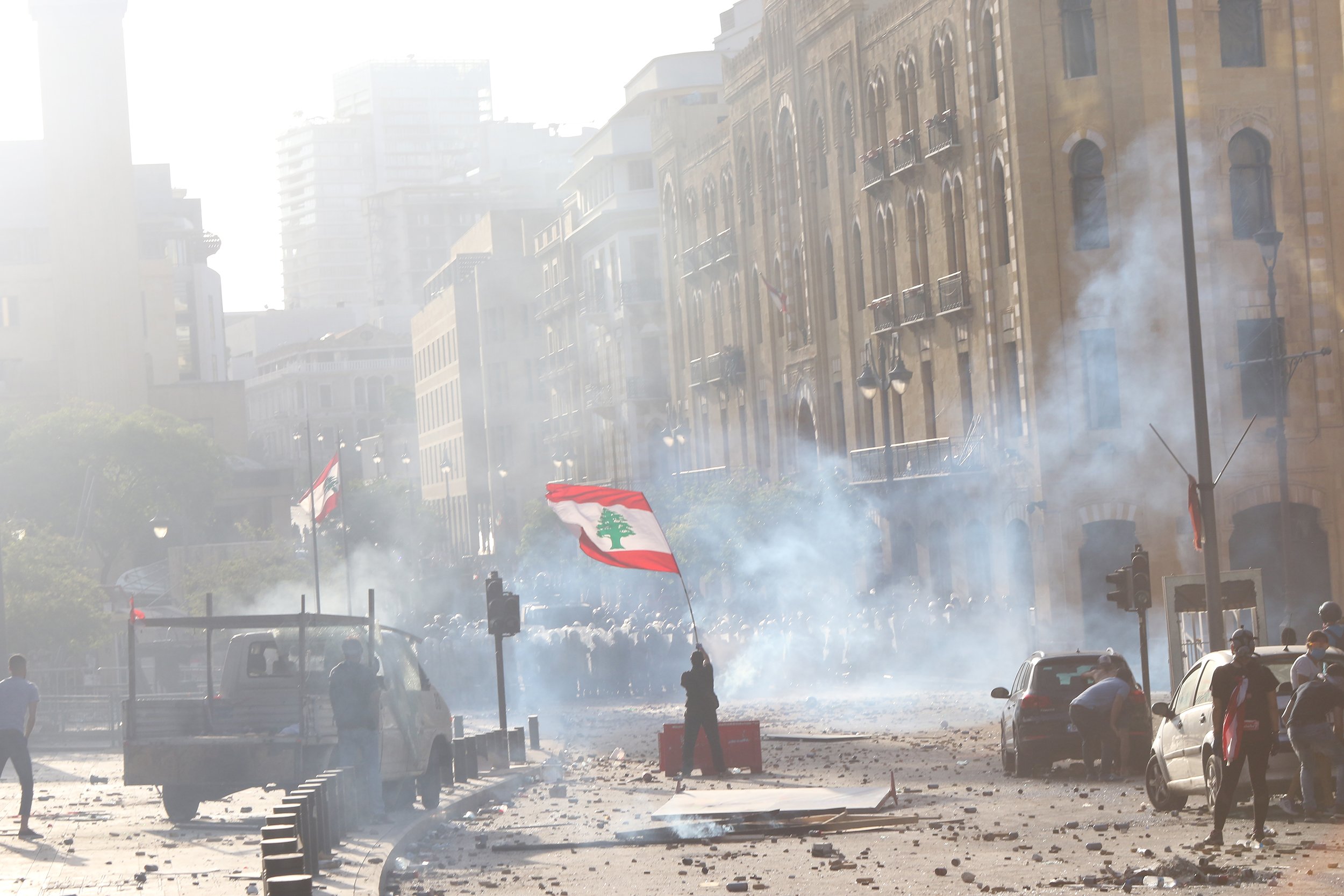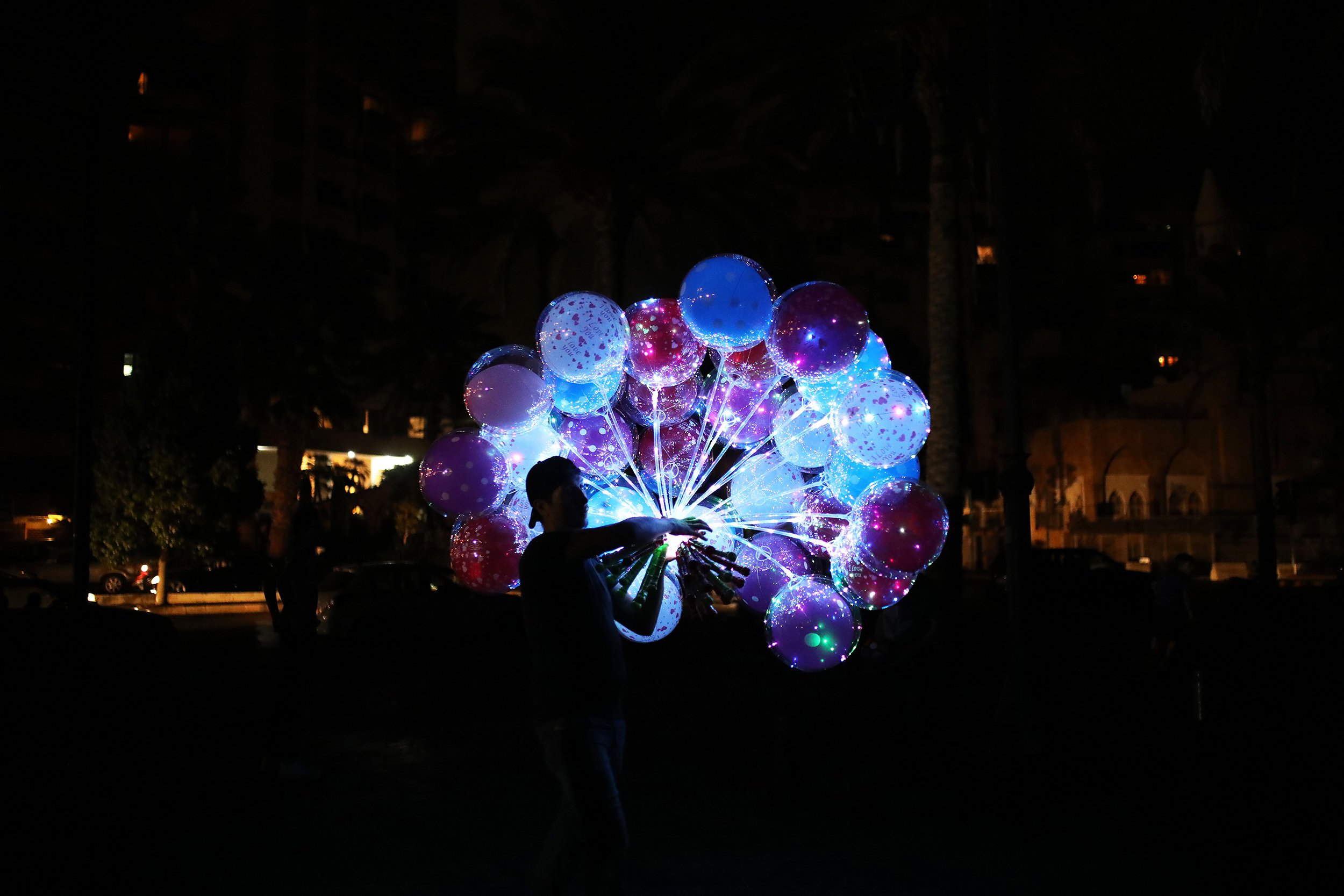Tiers of Trauma
Some might think the catastrophe that happened in Beirut on August 4, 2020, and the crisis that hit Lebanon happened from one day to the next, but there had been more than three decades of negligence and corruption flowing through the veins of the nation, bringing the country to its knees.
On August 4, 2020, ammonium nitrate stored in unsafe conditions in the port of Beirut, caught fire and exploded, killing more than 200, injuring 6,000, and leaving 300,000 homeless. The disaster struck in the midst of the Covid-19 pandemic and at the beginning of what would become one of the worst economic crises in the world, just a few months into what the Lebanese call “the revolution.”
The previous year, on October 17, 2019, tens of thousands of Lebanese had taken to the streets in protest against deteriorating living conditions. It was the first time in years that the country had witnessed such a strong sense of unity, but the dream was to be short-lived.
The exhibition documents the past two years in Lebanon, focusing on protests across the country, and the aftermath of the explosion, as well as some rare lulls in between. Not a single soul in Lebanon has been left untouched by the events of the past two years. Financially, those who had savings lost their money. Physically, there was the explosion that left more than 300 disabled, the everyday stress facing everyone in Lebanon, plus the Covid-19 pandemic, and many have simply been unable to cope. The country’s morale too has been hard hit as it appears to be in a state of depression, suffering constant anxiety, and even “schizophrenia” as citizens attempt to lead a normal everyday life in such an absurd setting.
People have been trying to get things changed; some have focused on the prospect of the elections in May 2022, while others have taken to the streets to express their anger. But change takes time, and Lebanon seems to be running out of time. A huge proportion of the younger generation has now left the country, and understandably so as they choose to leave in the hope of finding a “normal” life somewhere else, i.e. a life where buildings have not been gutted by an explosion, where streets have electricity, and children can dream of the future.
To date in Lebanon, there has been no change. Since 2019, there have many changes of government, but with no impact. In fact, things seem to have gone from bad to worse.
Lebanon is no longer a country at war. It has been and remains to this day a country in conflict, surrounded by war, and at the mercy of foreign players.
Until change comes, until justice is done, and until the families of victims of government negligence over the past few years are given the response they need, these pictures will stand as evidence of the injustice prevailing in the country.
This series was shown at Visa Pour L’Image’s 34th exhibition in Perpignan. The pictures below are a smaller edit of the complete exhibition.

